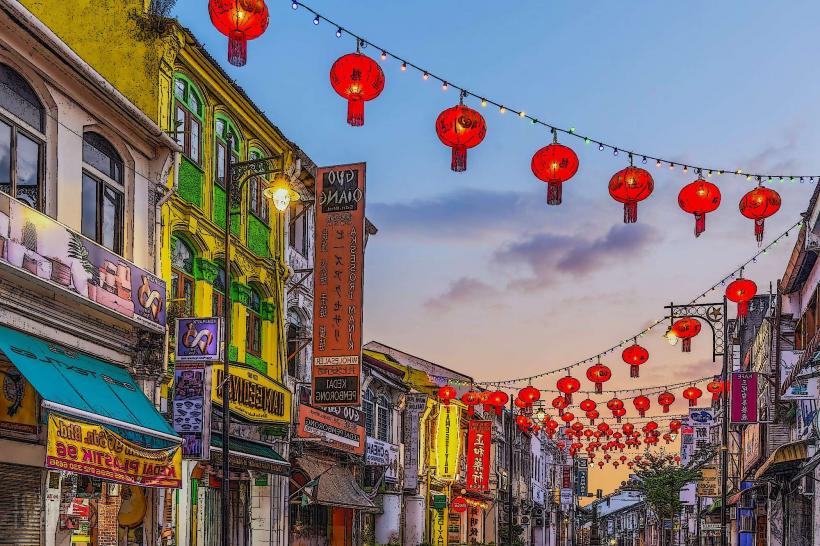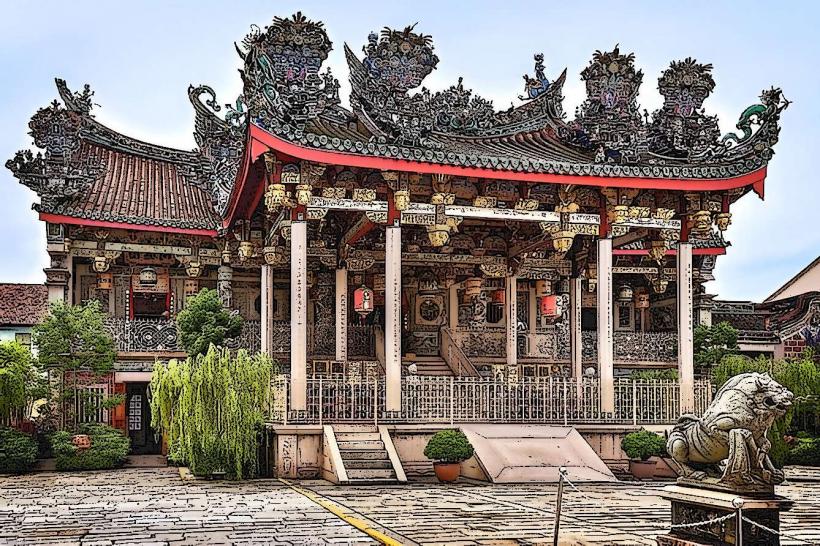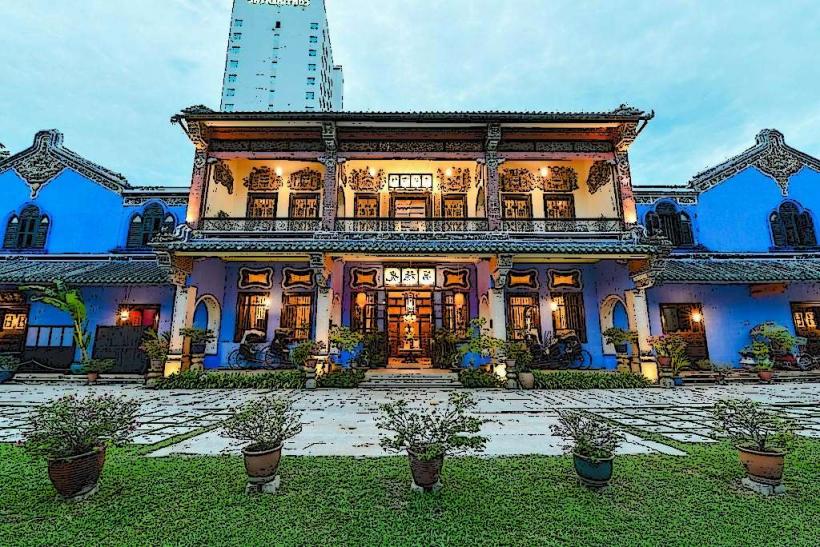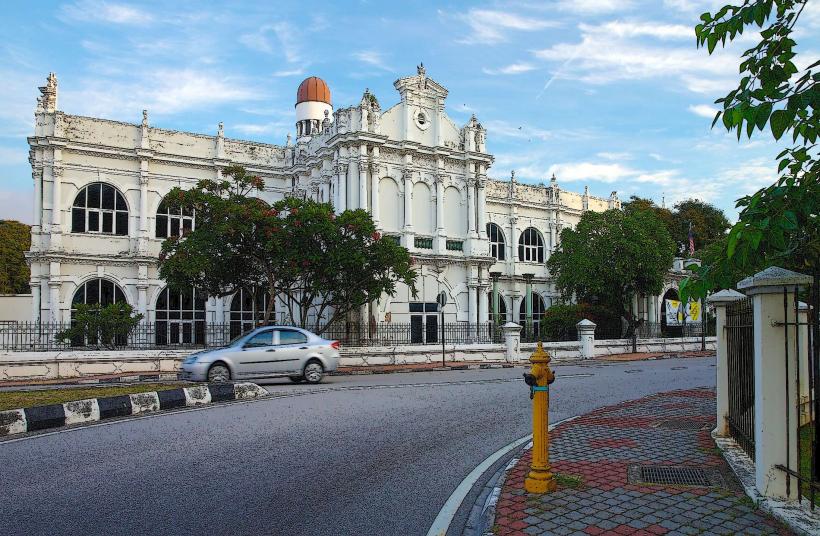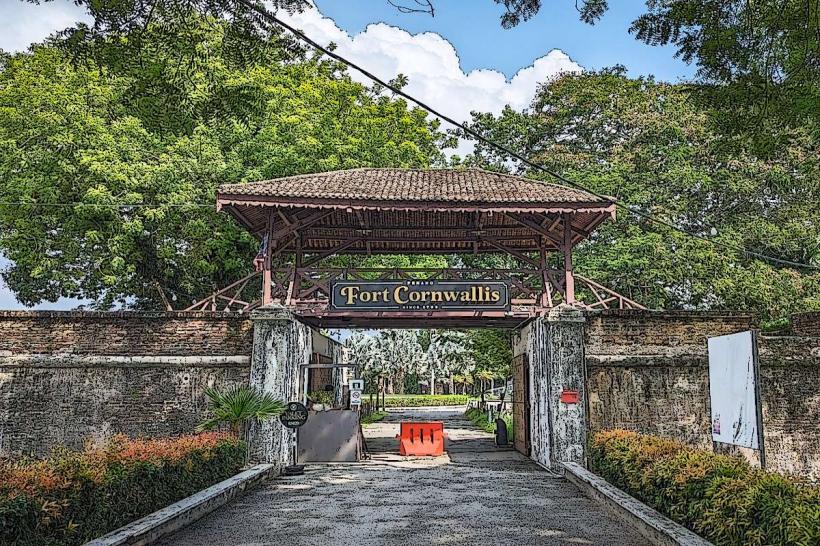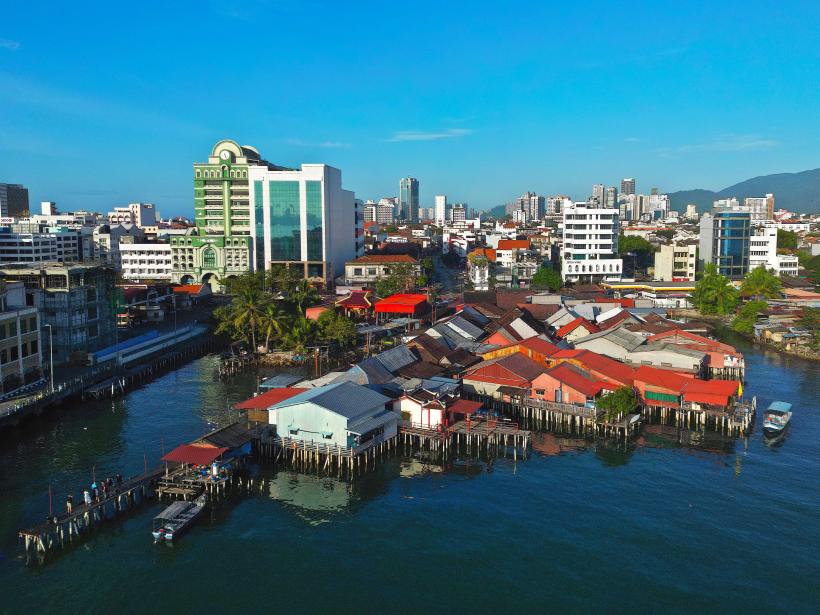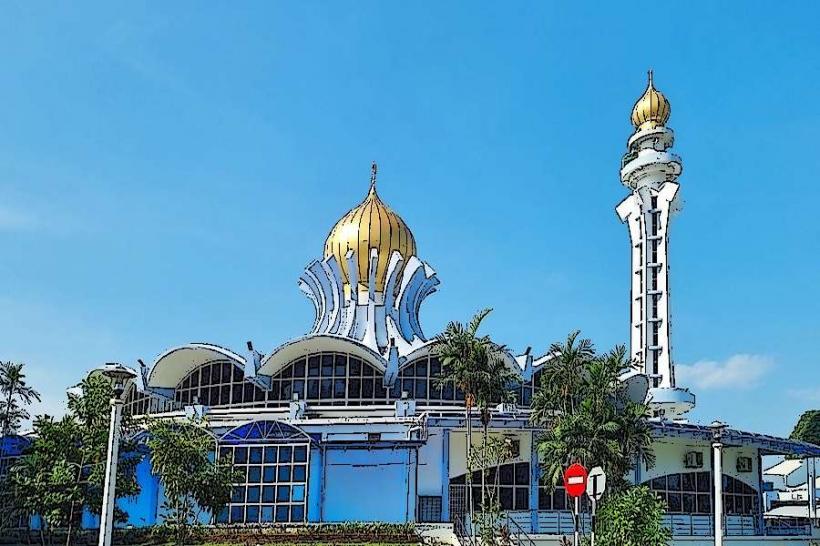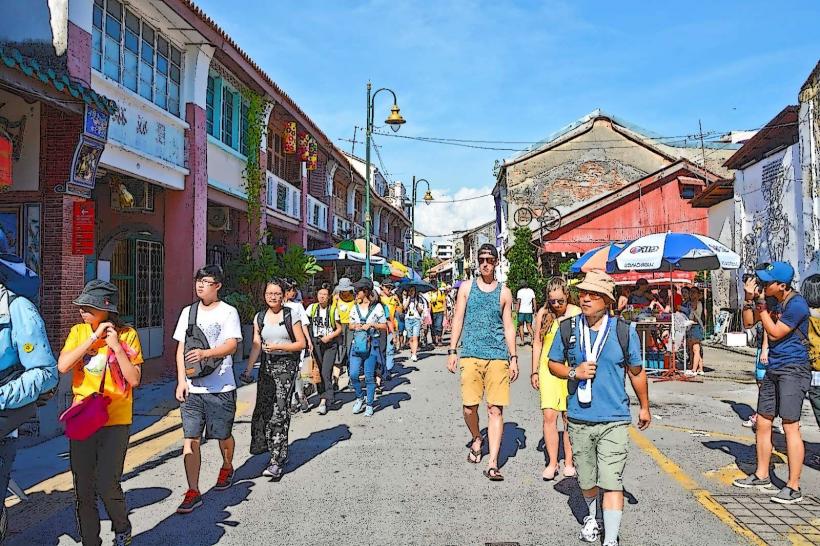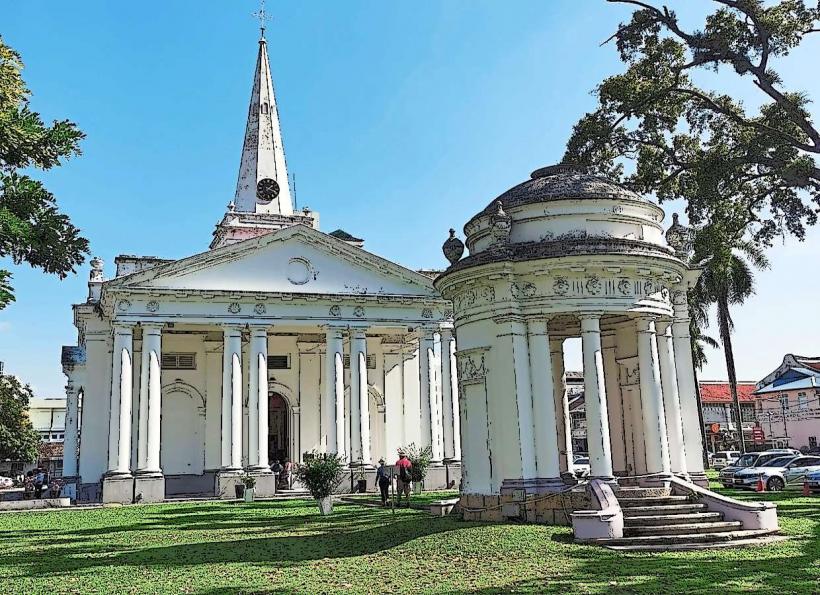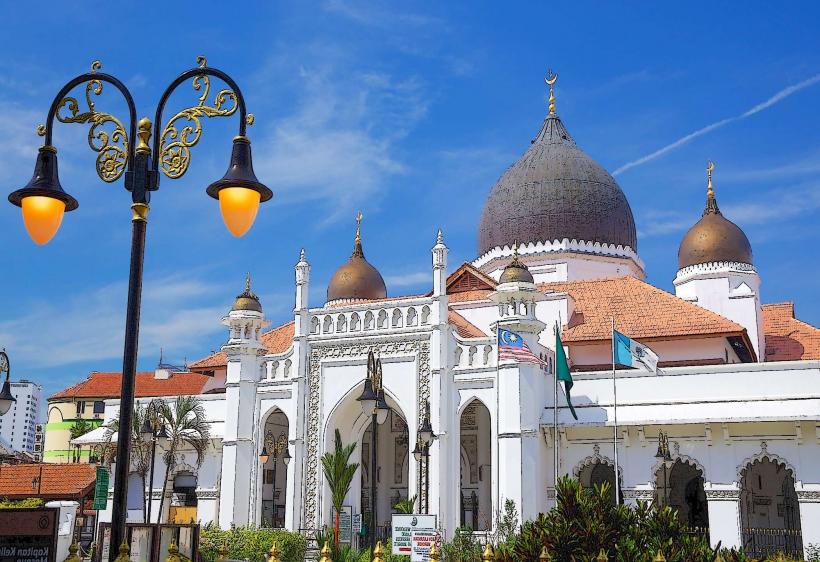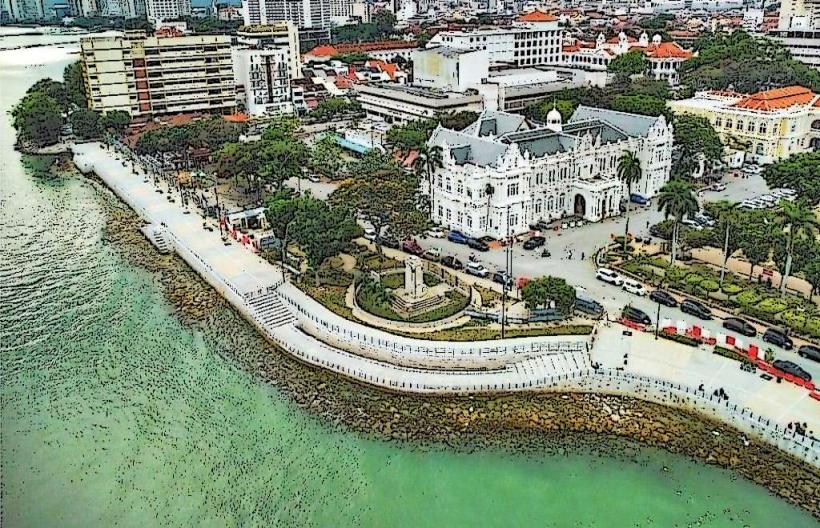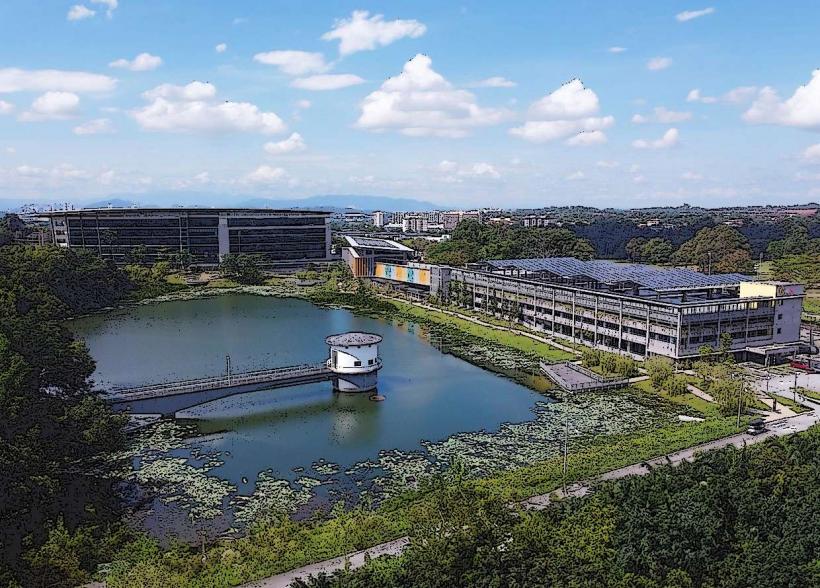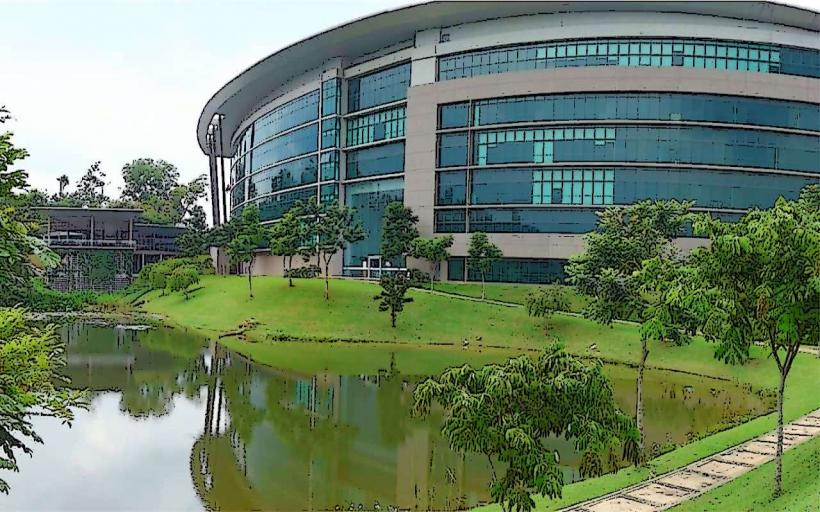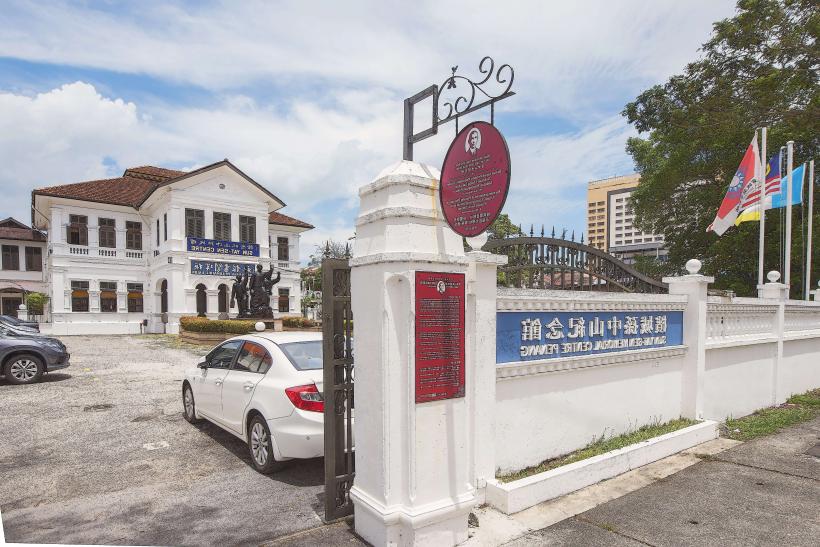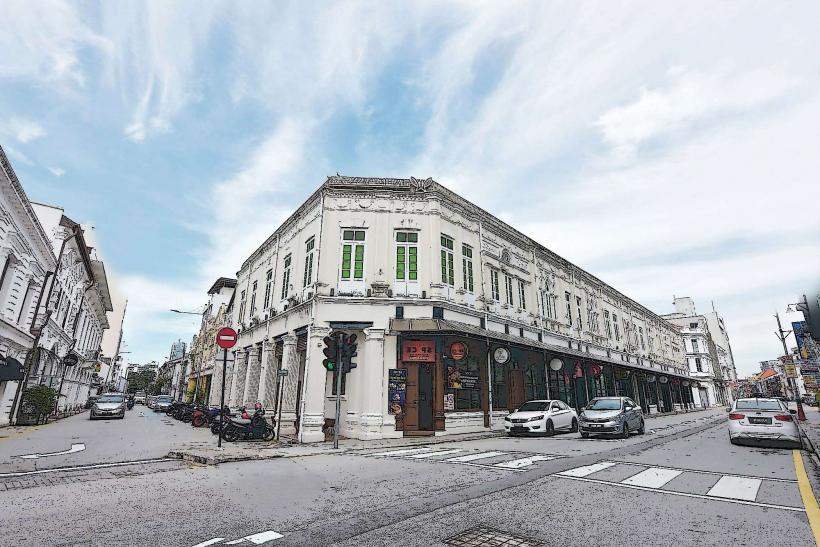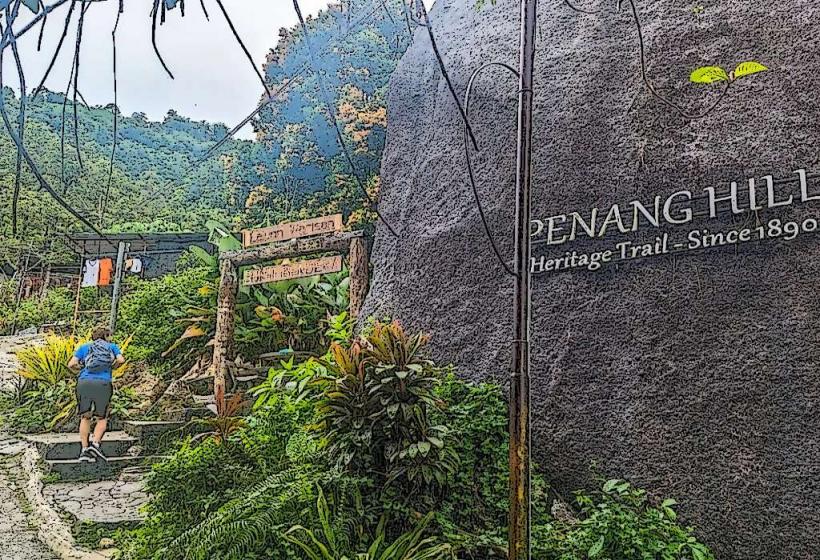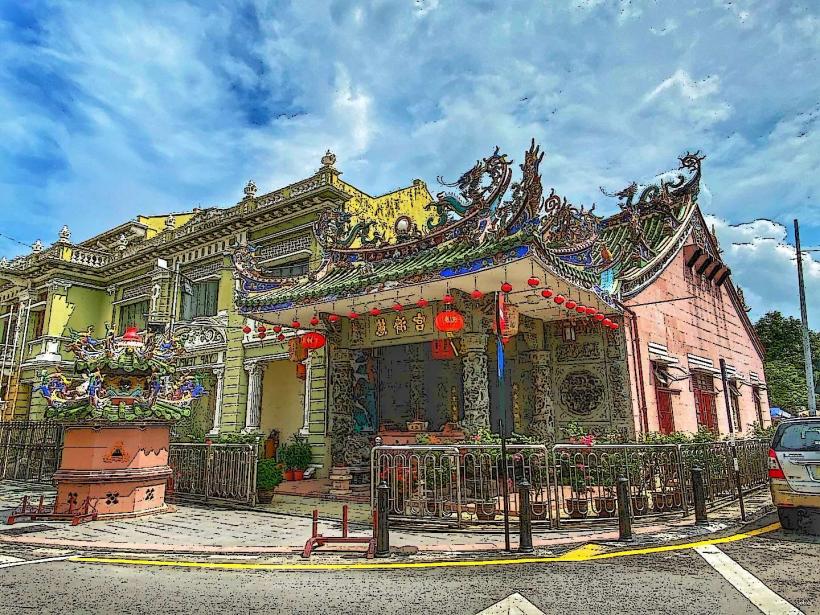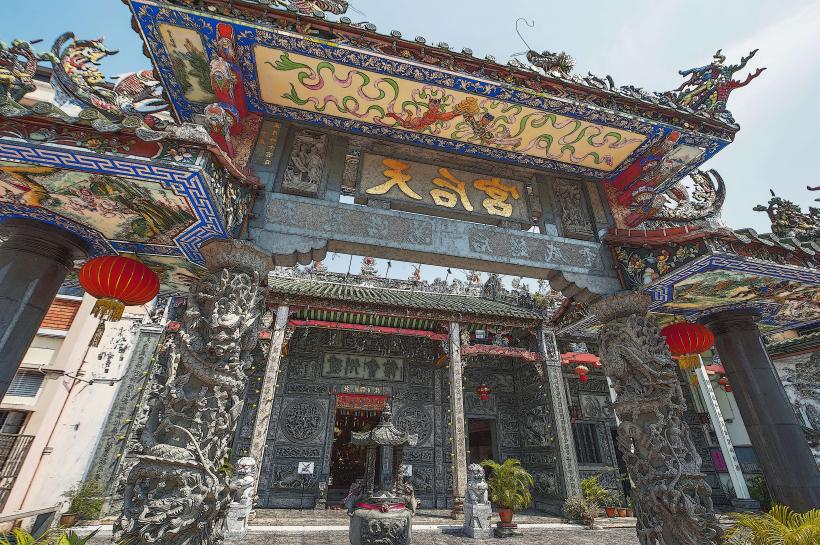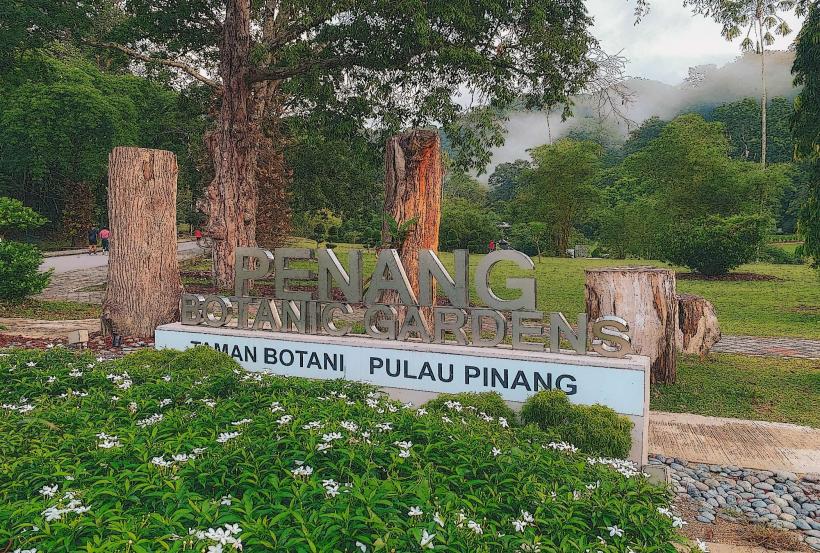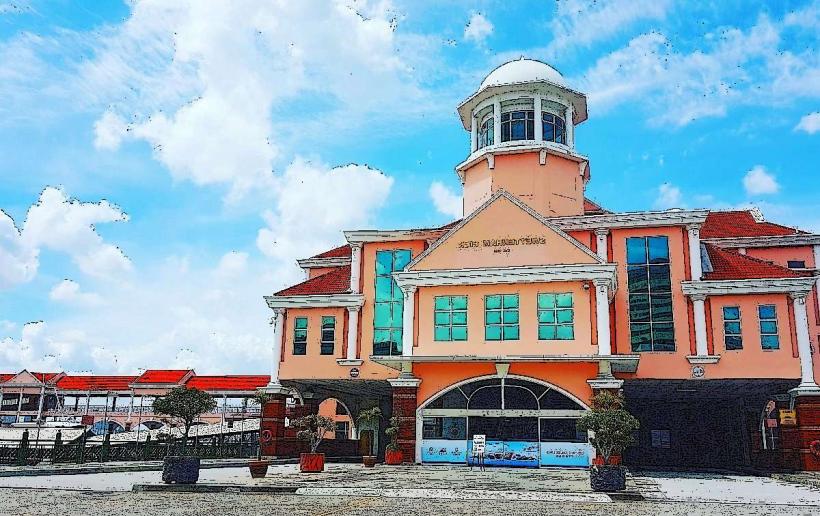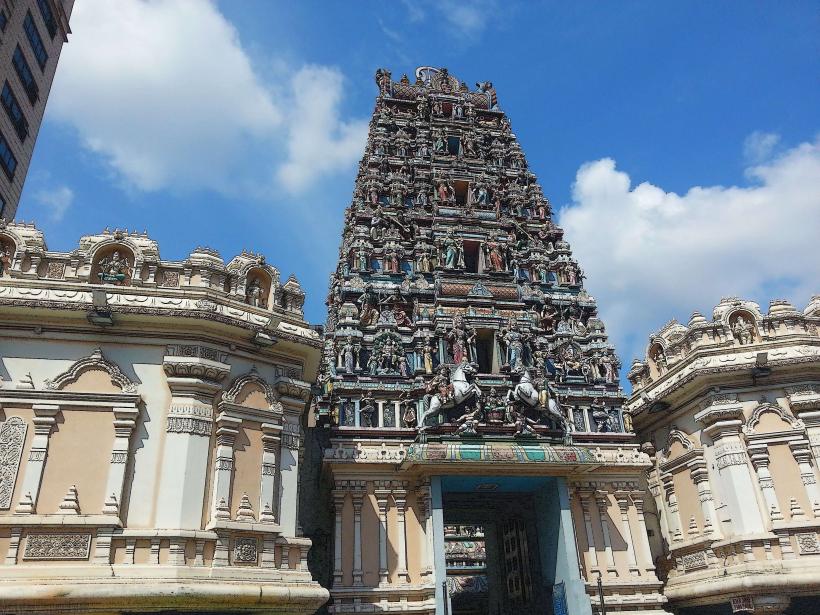Information
Landmark: Pinang Peranakan MansionCity: George Town
Country: Malaysia
Continent: Asia
The Pinang Peranakan Mansion is a museum in George Town, Penang, Malaysia, that provides an in-depth look at the life and culture of the Peranakan or Straits Chinese community. This community is made up of the descendants of Chinese immigrants who settled in Malaysia and Singapore between the 15th and 17th centuries and married local Malay women. The mansion, which was once the home of a wealthy Peranakan family, has been converted into a museum that showcases the unique culture, history, and artifacts of the Peranakan heritage.
1. Overview
- Location: 29, Church Street, George Town, Penang, Malaysia
- Established: The mansion was converted into a museum in 2001 to preserve and promote Peranakan culture.
- Type: Museum, Heritage Site
- Significance: The Pinang Peranakan Mansion provides insight into the lifestyle and traditions of the Peranakan Chinese, known for their unique blend of Chinese and Malay culture, including language, clothing, and culinary traditions.
2. Architecture and Design
The Pinang Peranakan Mansion is a traditional Peranakan-style house, designed to reflect the wealth and status of the family that once lived there. The architecture combines elements of both Chinese and Malay influences, typical of the Peranakan or Straits Chinese community.
1. Exterior and Courtyard
- The mansion is a three-story building with intricate wood carvings and mosaic tiles that reflect Chinese craftsmanship.
- The courtyard is an important feature of the mansion, serving as a central gathering area for the family and visitors. It is adorned with traditional plants and decorative elements.
2. Interior Design
- The interior of the mansion is a fine example of the Baba Nyonya style — a combination of Chinese and Malay aesthetics. The furniture is a mix of European, Chinese, and local Malay designs, reflecting the affluent lifestyle of the Peranakan people.
- Teakwood furniture, crystal chandeliers, ceramic vases, and embroidered silk curtains adorn the rooms, showcasing the elegance and opulence of the time.
3. Rooms and Features
- The Grand Hall: This is the main room for formal functions and gatherings. It is beautifully decorated with intricate carvings and ceramic tiles. The hall features large golden mirrors and antique furniture.
- Dining Room: The mansion also has a formal dining room that features a long teak table and Peranakan crockery, showing the fine dining practices of the era.
- Private Rooms: The private rooms, including bedrooms and sitting areas, are adorned with Chinese lanterns, wooden furniture, and decorative artifacts, giving a sense of the Peranakan lifestyle.
3. Cultural Significance
The Pinang Peranakan Mansion is dedicated to showcasing the distinct cultural identity of the Peranakan Chinese. This community developed a unique lifestyle that blended Chinese customs with local Malay traditions, particularly in the areas of language, clothing, architecture, and cuisine.
1. Baba-Nyonya Culture
- The Baba-Nyonya culture is a unique hybrid culture that developed when Chinese immigrants married local Malay women. Babas (Chinese men) and Nyonyas (Chinese women) were part of a community that preserved Chinese customs while adopting Malay language, food, and traditional clothing.
- The Peranakan people had a distinctive style, often wearing colorful batik and embroidered dresses, known as kebaya for women and baju panjang for men.
2. Traditional Peranakan Cuisine
- Cuisine plays a significant role in the Peranakan culture, and the museum often highlights the fusion of Chinese and Malay flavors. Popular dishes include Nyonya laksa, Hainanese chicken rice, and Peranakan-style dumplings.
3. Artifacts and Collections
The mansion houses a wide range of Peranakan artifacts, including:
- Antique Furniture: Such as lacquered cabinets, hand-painted chairs, and wooden chests.
- Peranakan Ceramics: Porcelain and pottery that were imported from China during the 18th century.
- Traditional Attire: The Nyonya Kebaya, a traditional dress, is displayed alongside footwear, accessories, and jewelry worn by Peranakan women.
- Silverware and Jewelry: Gold and silver jewelry used by the Peranakan people, including ornate pieces such as brooches, necklaces, and hairpins.
- Textiles: Intricate fabrics, including hand-woven silk and batik, which were integral to Peranakan fashion.
4. Visitor Information
1. Opening Hours
- Daily: The Pinang Peranakan Mansion is open every day from 9:00 AM to 5:00 PM, including public holidays.
2. Admission Fees
- Adults: The entrance fee is typically MYR 20 per adult.
- Children and Students: Discounts are available, with fees typically ranging from MYR 10 to 15.
- Guided Tours: Visitors can opt for a guided tour, available for an additional fee, which provides a more detailed explanation of the history, culture, and artifacts in the mansion.
3. Best Time to Visit
- The best time to visit is during the morning or early afternoon, as the museum tends to be less crowded, and the temperature is more comfortable.
5. Nearby Attractions
- Khoo Kongsi: A significant historical landmark, this Chinese clan house is another example of the influence of Chinese immigrants in Penang.
- Armenian Street: A nearby street known for its art galleries, street art, and historic buildings.
- Penang Street Art: George Town is known for its vibrant street art, which is scattered throughout the city and offers a different side of Penang’s history and culture.
- Cheong Fatt Tze Mansion: Known as the Blue Mansion, it is a historic building that offers insight into the life of a wealthy Chinese merchant in Penang.
6. Interesting Facts
- Restoration of the Mansion: The Pinang Peranakan Mansion was originally a private house before it was restored and opened as a museum. The restoration process aimed to preserve the original charm and authenticity of the building.
- A Tribute to Peranakan Heritage: The mansion is one of the few places in Penang where visitors can experience the rich and intricate culture of the Peranakan Chinese through interactive exhibits and authentic artifacts.
- A Popular Photography Spot: The mansion's stunning architecture and vibrant decorations make it a favorite spot for photography, particularly for visitors who want to capture the historical beauty of George Town.
The Pinang Peranakan Mansion is a must-visit destination for anyone interested in learning more about Penang's Peranakan culture and history. Its rich collection of artifacts, combined with the elegant architecture, makes it an important cultural and historical landmark in George Town.

